Soldiers and staff formerly under the command of General Sun Li-jen (孫立人) gathered on the eve of the Mid-Autumn Festival to attend the opening ceremony of the Sun Li-jen Memorial Hall in Taipei on Saturday.
Sun, called the “Rommel of the East” by his Western counterparts, was present in many of the battles of the Second Sino-Japanese War, including the Republic of China’s (ROC) military deployment in the so-called China-Burma-India theater, winning acclaim for providing relief to British forces in the region and re-establishing the Ledo Road, the alternative to the Burma Road, which was the primary supply route of the ROC’s Western allies before it was cut off by Japanese forces.
Erwin Rommel was a German general who participated in both World Wars and is most recognized for his desert warfare tactics in Nazi Germany’s North African campaign — fought primarily between the British Commonwealth and Axis allies Germany and Italy.
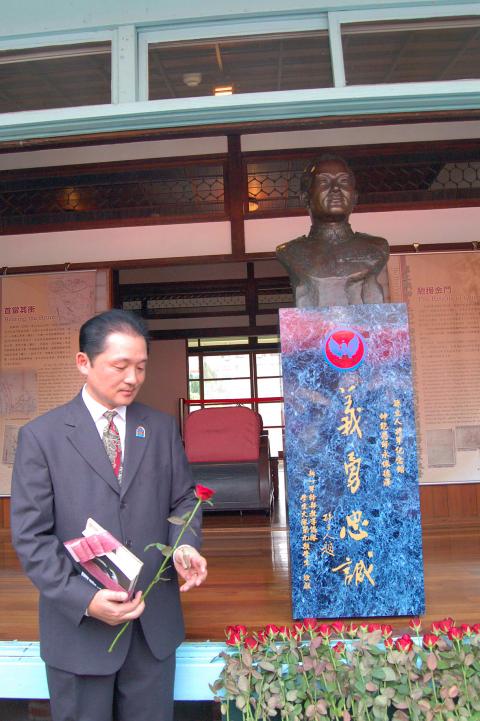
Photo: Su Meng-chuan, Taipei Times
On the eve of the Mid-Autumn Festival 65 years ago, Sun led the officers of the New 1st Army of the Nationalist Forces to Taiwan, relocating a training center to the island in an effort to train more troops for the ongoing civil war between the Chinese Nationalist Party (KMT) and the Chinese Communist Party.
One of the members of this force, 85-year-old Teng Hsueh-jui (鄧雪瑞), said that when they were training in northeastern China, Sun had always striven to make sure they had enough hot water to bathe with and leather coats to ward off the cold, adding that the general treated his soldiers just as he would his family.
“If it had not been for the general, we [the officers under his command] would not have been able to make a life in Taiwan,” Teng said.
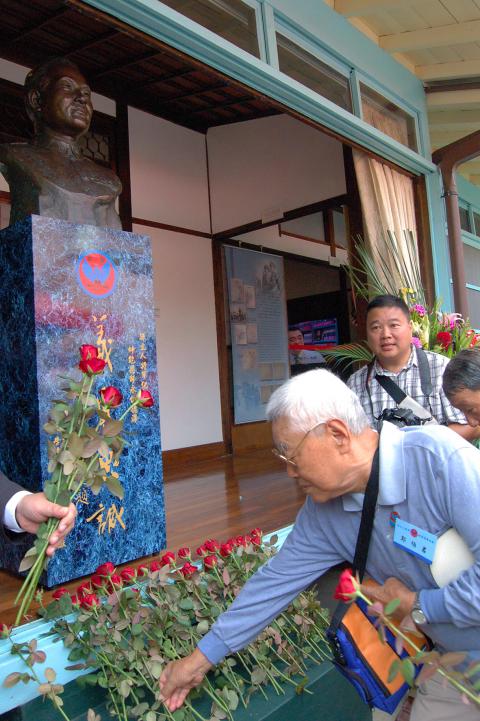
Photo: Su Meng-chuan, Taipei Times
To commemorate the general, the soldiers under his command collected funds to make a bronze statue of him — cast by artist Wang Hsiu-chi (王秀杞) — and donated it to the Sun Li-jen Museum, located in the house in which Sun had been kept under house arrest for 33 years.
In 1955, Sun was relieved of his command by former ROC leader Chiang Kai-shek (蔣介石) due to allegations that he was planning a mutiny and sheltering Communists, and he was kept under house arrest until the order was remanded by then-president Lee Teng-hui (李登輝) in 1988. However, Sun was only able to enjoy his freedom for two years before passing away in 1990.
His second son, Sun Tien-ping (孫天平), said on Saturday that his father often said he had never done anything that he regretted, but he did feel apologetic toward his former subordinates.
“I wish to thank everyone for not giving up on my father and even collecting funds to make a statue in his honor,” Sun Tien-ping said, adding that he firmly believed “justice and history would restore the truth of the matter.”
Taipei City Hall has registered Sun’s residence as a historic heritage site and, with the agreement of Sun’s family, has turned the house into a memorial museum, which is open on the second and fourth Sunday of every month.
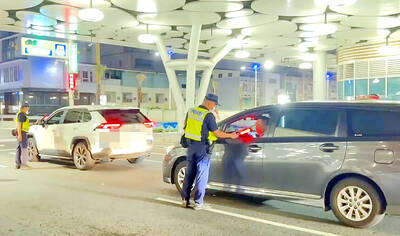
TRAFFIC SAFETY RULES: A positive result in a drug test would result in a two-year license suspension for the driver and vehicle, and a fine of up to NT$180,000 The Ministry of Transportation and Communications is to authorize police to conduct roadside saliva tests by the end of the year to deter people from driving while under the influence of narcotics, it said yesterday. The ministry last month unveiled a draft of amended regulations governing traffic safety rules and penalties, which included provisions empowering police to conduct mandatory saliva tests on drivers. While currently rules authorize police to use oral fluid testing kits for signs of drug use, they do not establish penalties for noncompliance or operating procedures for officers to follow, the ministry said. The proposed changes to the regulations require

The Executive Yuan yesterday announced that registration for a one-time universal NT$10,000 cash handout to help people in Taiwan survive US tariffs and inflation would start on Nov. 5, with payouts available as early as Nov. 12. Who is eligible for the handout? Registered Taiwanese nationals are eligible, including those born in Taiwan before April 30 next year with a birth certificate. Non-registered nationals with residence permits, foreign permanent residents and foreign spouses of Taiwanese citizens with residence permits also qualify for the handouts. For people who meet the eligibility requirements, but passed away between yesterday and April 30 next year, surviving family members
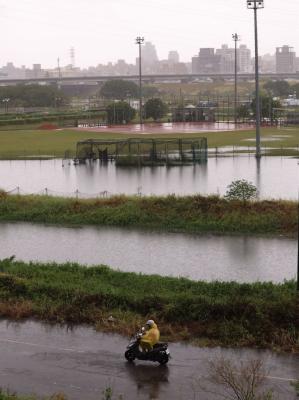
Taipei, New Taipei City, Keelung and Taoyuan would issue a decision at 8pm on whether to cancel work and school tomorrow due to forecasted heavy rain, Keelung Mayor Hsieh Kuo-liang (謝國樑) said today. Hsieh told reporters that absent some pressing reason, the four northern cities would announce the decision jointly at 8pm. Keelung is expected to receive between 300mm and 490mm of rain in the period from 2pm today through 2pm tomorrow, Central Weather Administration data showed. Keelung City Government regulations stipulate that school and work can be canceled if rain totals in mountainous or low-elevation areas are forecast to exceed 350mm in
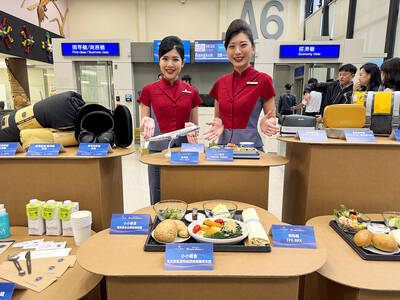
China Airlines Ltd (CAL) yesterday morning joined SkyTeam’s Aviation Challenge for the fourth time, operating a demonstration flight for “net zero carbon emissions” from Taiwan Taoyuan International Airport to Bangkok. The flight used sustainable aviation fuel (SAF) at a ratio of up to 40 percent, the highest proportion CAL has achieved to date, the nation’s largest carrier said. Since April, SAF has become available to Taiwanese international carriers at Taipei International Airport (Songshan airport), Kaohsiung International Airport and Taoyuan airport. In previous challenges, CAL operated “net zero carbon emission flights” to Singapore and Japan. At a ceremony at Taoyuan airport, China Airlines chief sustainability